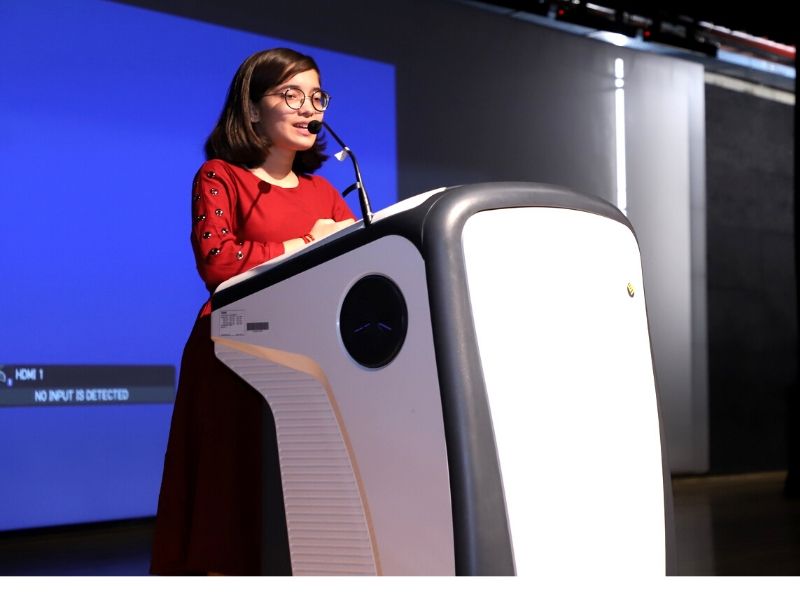METHOD
A. Design
The NPTEL website and Udemy website were selected for evaluation. While NPTEL offers courses by professors from the prestigious IITs. Udemy offers courses from some of the best tutors across the globe. So it's evident that none of the two platforms lack in terms of providing quality courses. But from a student's perspective, one is likely to enroll for the courses on these platforms if he/she has a satisfactory user experience on their websites. Hence keeping in mind the importance of usability metrics as a key indicator a study was conducted where volunteers agreed to devote their time to do certain tasks and give valuable feedback by filling out a questionnaire. The aim of the study was to analyze the data of users from this questionnaire post the completion of their representative tasks. All the participants were directly observed during the tasks.
The carefully chosen representative tasks are as follows:
1. Login/ Sign Up
2. Look for a course in a domain you are interested
3. Go through the details of the courses
It is important to note that since the motive of this study was to study usability the participants were asked to ignore monetary aspects and were asked to look for a course that they would be willing to buy given that they have all the money to invest into the course. As for the third task, the participants were asked to find and go through all the details about the courses that they are surfing to a point that they make a decision whether to consider enrolling for it or not. The avoid bar on user memory all the tasks were of moderate nature. The post-study questionnaire was designed keeping in mind five usability components developed by Nielsen. The usability components are learnability, efficiency, memorability, error, and satisfaction.[15] Additional questions on impression and their preferred platform amongst the two to buy courses were also included in the questionnaire. [17 pak]
Likert-scale was used for user compliance.[18 pak][19 pak] Likert-scale is a five-point scale having '1' as 'strongly disagree' and '5' as 'strongly disagree'.
B. Participants
Twenty-four participants were involved in this observational study. All the participants were volunteers. 60% of participants were females while the rest 40% were males. Most participants were among the age group of 21-22 (64%). A majority of the participants had an experience of surfing or buying online courses (84%). 88% of the total participants were students while the rest 12% were working professionals. Eighteen participants (72%) had already used the NPTEL website and twenty participants (80%) had already used the Udemy Website.
C. Experimental Design
A call for volunteers to take part in website usability research was posted on social media. The first twenty-five people to show interest were asked to fill out a consent form and some basic demographic details about them were collected. The volunteers were either students or working professionals who are most likely to be benefited from the courses of these two websites. The users were asked to share their screens and observed while they were doing the allotted tasks.
Each participant was given a 20 min time frame to complete the allotted tasks. All the participants finished the tasks well within the time. A post-study questionnaire was presented to the users on completion of tasks.
D. Procedure
Online meets were scheduled for each participant at their convenient times. All the participants joined the meet either through their Laptop or PC. Participants were observed through screen sharing while they performed their tasks. The participants were briefed about the motive of the study and what is expected from them before they start doing their tasks. In case they felt stuck or needed some help with the tasks they were free to ask and seek some help from us. Some screenshots were also taken while conducting the experiments with the consent of participants.
On the declaration of completion of tasks by the participants, they were presented with the post-study questionnaire. The participants were briefed about the questions on their demand.
IV. DATA ANALYSIS
Likert- Scale values for both the websites have been recorded against their respective usability questions(Tables III and IV)
A very important observation that was made through this experiment was between the errors committed and error recovery of both websites. Astonishingly none of the participants faced any error while doing tasks on the Udemy website while 68% of participants faced some difficulties while doing the tasks on the NPTEL website. The hardships faced by the users have been recorded in the table(NUMBER). Moreover, 33% of participants selected "Strongly Disagree" and another 33% selected "Disagree" while recording their response about the recovery from the error.
V. Results
The overall results showed that the user's response towards the Udemy Website was very positive in terms of usability.




























